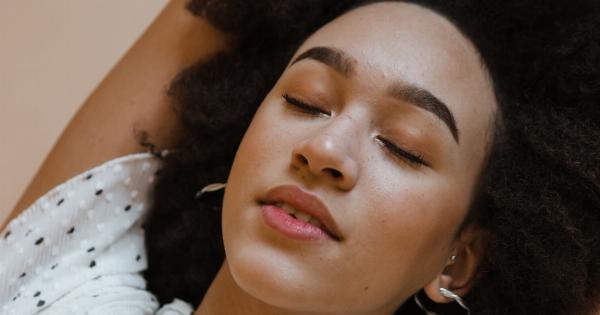Sleep is an essential part of our daily routine and plays a crucial role in our overall well-being. While we often focus on the duration and quality of our sleep, another factor that could affect our sleep experience is our sleeping posture.
Interestingly, our sleeping posture can have an impact on the types of dreams we have during the night. In this article, we will explore the connection between your sleeping posture and your dreams, shedding light on how different positions can influence the content and frequency of your dreams.
1. The Back Sleeper
If you are someone who prefers sleeping on your back, you might have noticed that you tend to have more vivid and intense dreams.
This sleeping position allows more oxygen to reach your brain, stimulating brain activity and leading to more memorable dreams. Back sleepers often report dreams that are rich in imagery, detail, and color.
Additionally, sleeping on your back reduces the likelihood of experiencing sleep fragmentation, ensuring longer periods of REM sleep, or rapid eye movement sleep, which is closely associated with dreaming.
2. The Stomach Sleeper
Sleeping on your stomach, also known as the prone position, can lead to a different dream experience. This position can cause a sense of being trapped or limited in your dreams.
Some sleepers have reported dreams of suffocating, being unable to move, or experiencing immense pressure. Sleeping on your stomach can also create more fragmented sleep, leading to shorter bouts of REM sleep and potentially affecting the frequency and duration of your dreams.
3. The Side Sleeper
Side sleeping is one of the most common sleeping positions. It offers various health benefits, including improved digestion and reduced acid reflux.
When it comes to dreams, side sleepers often have more realistic and plausible dreams compared to those who sleep in other positions. This may be due to the fact that side sleeping promotes a sense of security and comfort, creating a favorable environment for pleasant and less chaotic dreams.
4. The Fetal Position
Sleeping in the fetal position, curled up on your side with your knees drawn towards your chest, is also a popular sleeping posture. This position mimics the position we were in the womb and is often associated with feelings of safety and security.
Many individuals who sleep in the fetal position report having emotionally comforting dreams. These dreams often involve themes of protection, nurturing, and nurturing relationships.
However, some people have also experienced dreams related to vulnerability or feeling confined, which may be associated with the physical restriction of the sleeping posture.
5. The Starfish Sleeper
If you sleep with your limbs outstretched, resembling a starfish, you are a starfish sleeper. This position is less common among adults but can still occur.
Starfish sleepers often have vivid dreams characterized by freedom, exploration, and adventurous scenarios. As this sleeping posture allows for more open body language, it may translate into dreams that involve expansive environments and a sense of liberation.
6. The Soldier Sleeper
The soldier sleeper is someone who sleeps on their back with their arms extended straight down by their sides. This position often leads to a more relaxed sleep experience, which can enhance the likelihood of having pleasant dreams.
Soldier sleepers tend to dream about leadership, responsibility, and power. Their dreams may involve scenes where they are in control or taking charge of situations.
7. The Yearner
The yearner position involves sleeping on your side with your arms outstretched in front of you. If you are a yearner sleeper, you may have an increased propensity for having nightmares or intense dreams.
The vulnerability associated with the yearner posture can manifest in dreams involving being chased, feeling threatened, or encountering difficult situations. Yet, this position can also be seen as an opportunity for growth and self-discovery, as it invites the dreamer to confront their fears and overcome obstacles.
8. The Freefall Sleeper
The freefall position is characterized by sleeping on your stomach with your hands above your head or tucked under the pillow. This position often leads to vivid and intense dreams.
Freefall sleepers may experience dreams that involve elements of excitement, thrill, or danger. The notion of falling, flying, or engaging in high-intensity activities may be prevalent in their dream narratives.
9. The Log Sleeper
The log sleeper position involves sleeping on your side with both arms extended downwards. Log sleepers often experience dreams with a sense of structure and order. These dreams may focus on routine activities, familiar people, or situations.
The log position offers a sense of stability and calmness, which can translate into serene dream experiences.
10. The Zen Sleeper
The Zen sleeper is someone who can comfortably fall asleep in various positions and can quickly adapt their sleeping posture.
This flexibility often results in a varied dream experience, with dreams that can range from chaotic and unpredictable to peaceful and harmonious. Zen sleepers have the ability to embrace change and navigate different dream scenarios.
In conclusion, our sleeping posture can influence our dream experiences.
From sleeping on your back and having vivid dreams to sleeping on your stomach and experiencing a sense of confinement, each sleeping position can affect the content, intensity, and emotions associated with our dreams. Understanding these connections can help us explore the relationship between our sleep postures and our dream patterns, enriching our understanding of the fascinating world of dreams.




























